
PAGE 1 | 2 | 3

Purple Swamphen and chick


Porphyrio porphyrio
The bright plumage and big feet on these birds make a big impression the first time
you see them. They eat frogs, molluscs and reed stems and with those giant long toes can
sometimes be seen walking on the leaves of water lilies. Surprisingly, for birds with
such long toes, they run really well.
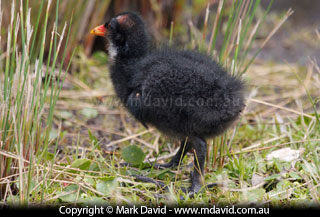
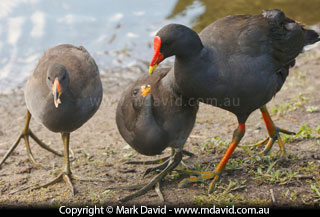
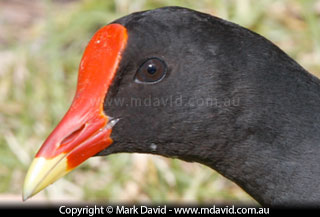
Gullinula tenebrosa
I used to mistake these for Purple Swamphens. But these birds are a bit smaller, lack the intensity of blue in their plumage and their
beaks look different too. You can see some young ones in one of these photos but the really young
chicks look like long-haired black tennis balls — crazy-cute. I usually hear the
chicks before I see them, and then often spot them walking among the water lilies.

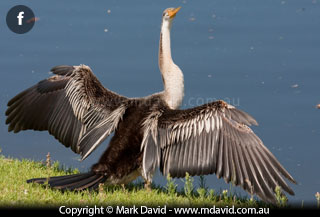

Anhinga melanogaster
These birds don’t have water-repellant feathers. This means that after being in the
water they have to stand with their wings out to dry, like what’s happening in a couple of these photos. But having feathers
that aren’t water-repellant also means they swim underwater really well. This is a fairly big bird that often just
pokes its head out of the water — the rest being submerged. It gives them the
appearance of a snake, which is why some people call them snake birds. They eat fish.
That’s a male marked with the m and probably a female marked with the f. I say probably
because both sexes in the younger darters have those colours. More about darters here.
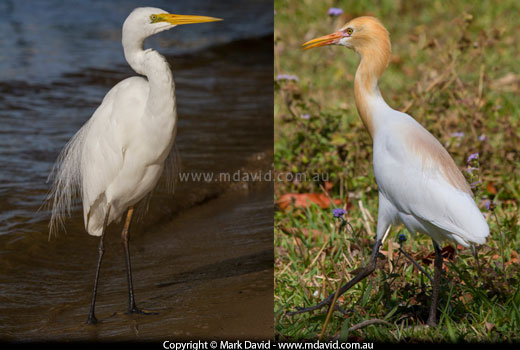
Ardea or Egretta species
A very regal-looking bird with a crazy-long skinny neck. I’ll come right out and
say these egrets look pretty much the same to me. Amazingly beautiful, definitely, but
hard to tell apart. In case you’re wondering what I mean, there’s the Great
Egret and the Little Egret. And there’s an intermediate one called the
Intermediate Egret. Now, the Little Egret sometimes hangs around cattle, as does another
type called the Cattle Egret. So I admit I’m not good with egrets, but at least I
can tell them from the cattle. They eat fish and insects but not cattle.
That bird shown here with the orange feathers by the way, is a Cattle Egret in its breeding plumage.

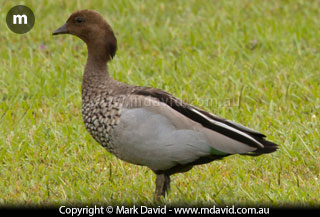
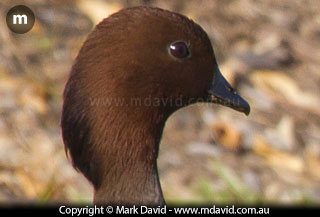
Chenonetta jubata
That’s the female marked f and the males marked m. The male
has a cute brown mane on the back of its head as you can see in one of the smaller pics.
Cruel people might call it a mullet haircut. These birds are comfortable on land
and among trees, as long as there’s water somewhere nearby. They feed on some
types of grass and seeds, with a real taste for rice.
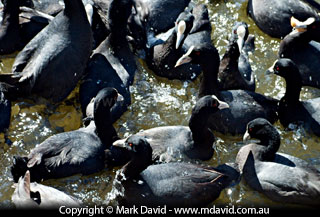
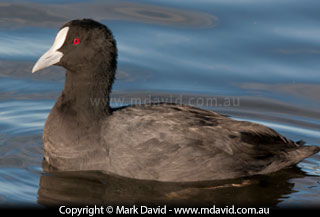
Fulica atra
A few of these guys swimming around makes a pleasant, calming scene. But watch a whole
lot of them when they get together and you’re likely to end up with a facial tic. That’s
because they create large, crazy floating flocks in a manner which looks chaotic to me, but which
obviously makes sense to the coots. Almost exclusively vegetarian, when it comes to
breeding time they sometimes forget to play nice with other species. They’ve
even been known to kill the occasional duckling.
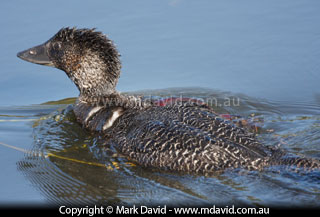
Biziura lobata
A strange-looking duck, this one. First of all, it often swims half-submerged.
Second, the male has a large lobe of skin hanging under its bill. It distends it during
courtship to look attractive to the female. Beauty in the eye of the beholder, I suppose.
If you should ever find yourself close enough to one, you’ll notice that the lobe
has a strong musky smell. Thus the name. During courtship the male splashes water
behind it during an impressive, noisy display. Sydney is unlikely to see this because
it’s apparently outside of its breeding range.

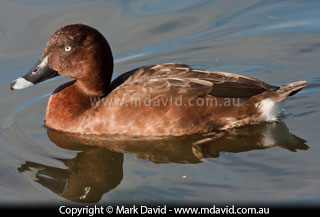
Aythya australis
If it strikes you as being somehow disrespectful to address these individuals as
‘Hardheads’ then ‘White-eyed Ducks’ should also do it. Speaking of
white eyes, the males have them while the females have brown eyes. Which would make them
brown-eyed White-eyed Ducks, which I guess is why we go back to calling them Hardheads.
Hardheads are good swimmers, both on the water and diving into it. They mainly eat water
plants but they also don’t mind the occasional aquatic beetles and yabbies.
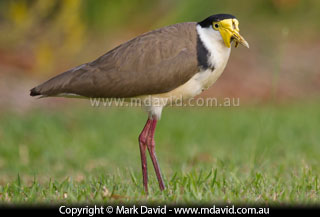
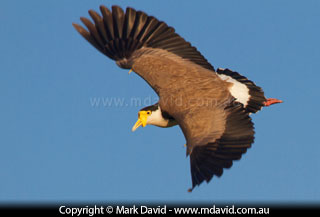
Vanellus miles
These critters are also called Spur-winged Plovers throughout the southern part of their
range, and Sydney is in that southern part. It turns out that those southern birds look a
little different too. Much more info here.
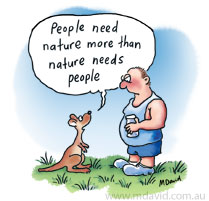
Copyright © Mark David. All rights reserved | Mark David on Google+